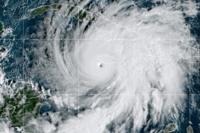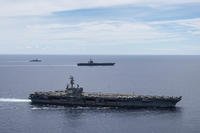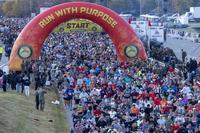The Marine Corps is putting its next generation of protective gear through a kind of boot camp designed to stress problem areas and reveal weaknesses.
The items to be tested are the Generation III plate carrier vest and reinforced pack frame -- both prototypes that have yet to make it to the fleet. They'll be subjected to freezing temperatures, saltwater, sand abrasion, and possibly oil and petroleum contamination as the service works to troubleshoot problems well before the gear has a chance to fail downrange.
Potential focus areas for the tests include zippers and Velcro on the plate carrier, which tend to get fouled and jammed in sandy environments, Nick Pierce, team lead for body armor and load-bearing equipment at Marine Corps Systems Command, told Military.com. The new plate carrier prototype used updated versions of both these elements, he said.
"It's something that's a constant issue for all our gear that has those components," he said. "So that's why we're testing it so early, even before we get close to fielding a new system."
For the reinforced pack frame, used to support rucksacks, the top concern is ensuring the components don't break when exposed to prolonged cold temperatures, a noted problem with the current frame. The reinforced design is in large part a response to issues with the current frame. Marines at School of Infantry-West in California reported in 2013 that the frames broke during normal use. And in 2015 and 2016, Marines participating in cold weather exercises in Norway and California complained about similar issues.
To test the frames in the cold, Marine Corps Systems Command sent 40 of the frame prototypes to Norway with a new 300-man rotation that deployed earlier this month. For the next six months, Marines assigned to the force will use the packs during routine training, including cold weather exercises above the Arctic circle. Then, the packs will be sent back to SYSCOM so that experts can study wear points and breakages, said Flora Jordan, engineer for body armor and load-bearing equipment.
"Some of the most important things about our equipment is how it fits and feels on Marines," Pierce said.
The frames will also be subjected to temperatures as low as -30 degrees Fahrenheit in a lab environment over a 24-hour period for maximum stress.
When it comes to testing salt and sand exposure, the process is scientific. According to an environmental test plan published in a Marine Corps solicitation this month, the Generation III plate carrier prototype will be immersed in a saltwater bath for 24 hours, then have Velcro, zipper, and quick-release systems tested multiple times for failures and weaknesses. The vest will also endure a wet/dry cycle test in which it is soaked in saltwater and allowed to dry 10 times in a row to test its durability. In another long-term exposure test, the vest will sit for two weeks in a "salt fog" to assess how the corrosive environment might degrade it. After all that, the same plate carrier will endure a four-hour sandblast, with all material failures carefully documented.
All testing is expected to take place this year, officials said. The gear itself, however, may be a ways from fielding. The Marine Corps is still designing specifications for both items, and the plate carrier has not yet been budgeted. But Pierce said the hope is that by conducting environmental testing early, SYSCOM can spare frustrating discoveries after gear is fielded.
"For the individual Marine, when we go out and talk to Marines, we hear frustrations about when gear breaks while they're out in the field," he said. "If a zipper breaks or something like that when they're out on deployment or on field operations, it can be hard for them to deal with.
By testing it this much this early, it prevents those frustrations and impact to what they do out in the field. So they're not thinking about their gear so much; they can focus on their mission."
-- Hope Hodge Seck can be reached at hope.seck@military.com. Follow her on Twitter at@HopeSeck.
Related Video:































